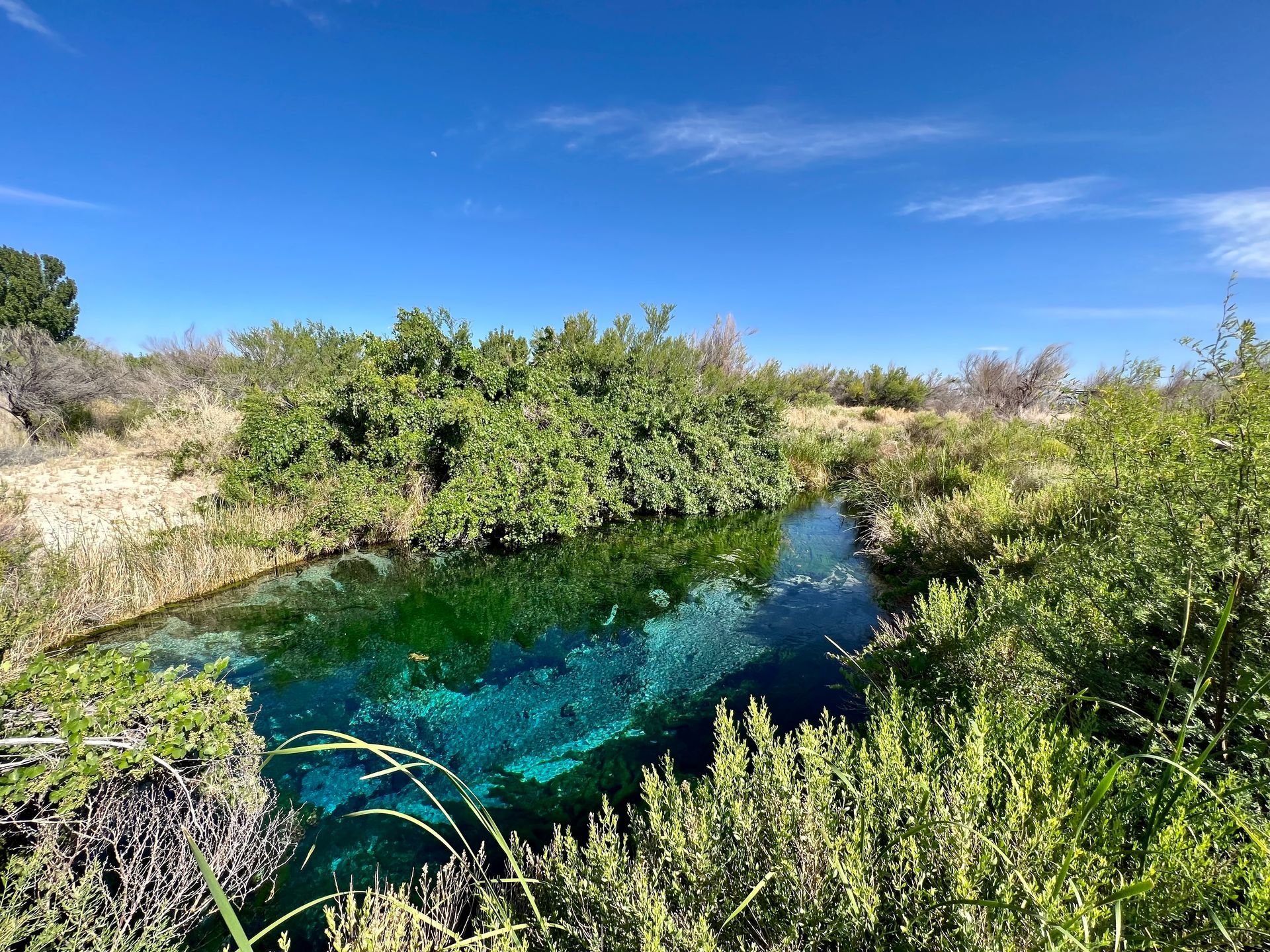Advocacy Alert: Ash Meadows National Wildlife Refuge

By Morrigan DeVito
From now until April 15, Red Rock Audubon members have a chance to submit a public comment to the BLM and stand up for birds and biodiversity in the Amargosa Valley. On February 27th, the Amargosa Conservancy hosted a public rally and meeting with the BLM to express the need for a mineral withdrawal in Ash Meadows National Wildlife Refuge. A mineral withdrawal would protect these sensitive areas by withdrawing them from new mining claims, and board members John Hiatt and Alex Harper gave verbal comments at the public meeting to express their support alongside the local Amargosa community. There is still time to submit written comments online by visiting the “Save Ash Meadows” campaign on the Amargosa Conservancy’s website, which helps you draft a comment and provides more history on the campaign.
The Amargosa Valley, and Ash Meadows especially, is an oasis for 26 endemic species alongside both migratory and resident birds who seek water, nesting habitat, and food in the form of invertebrates and seeds. Ash Meadows is a RAMSAR
wetland of international importance, and a National Audubon
Important Bird Area, two designations that reflect the abundance of water and habitats (wetlands, mesquite bosques, desert scrub, alkaline salt flats) found here. It’s no wonder Ash Meadows is a popular birding spot, where springtime migrants like Common Yellowthroats and Yellow Warblers can be heard singing from the springs, and wintering waterfowl and sparrows are among the frequently counted in the annual Ash Meadows Christmas Bird Count. That’s not to mention birds of high conservation concern that make this landscape home, like migratory shorebirds and breeding songbirds like the Southwestern Willow Flycatcher, Yellow-billed Cuckoo, and Least Bell’s Vireo. All of these birds face rapid population declines across the West as habitat is degraded or altered. They can’t afford to lose more. Today’s threat of exploratory drilling and new mining poses an alarming risk to groundwater depletion or alteration of natural spring flows, both of which could drastically alter the habitat so many bird species have come to rely on.
Protecting birds is one reason among many to express the need for a mineral withdrawal to the BLM. Amargosa Conservancy is encouraging people to continue submitting their public comments and stand up for this precious landscape. You have until April 15th to make your voice heard on behalf of birds, water, Tribes, and the local communities of the Amargosa Valley. To submit your comments online and get tips on what to say, visit the Save Ash Meadows campaign on
Amargosa Conservancy’s website. Don’t be afraid to get personal! Tell the BLM what Ash Meadows means to you as a birder. This broad support helps show how important a mineral withdrawal is to a variety of communities across the Mojave.
.
RECENT ARTICLES



